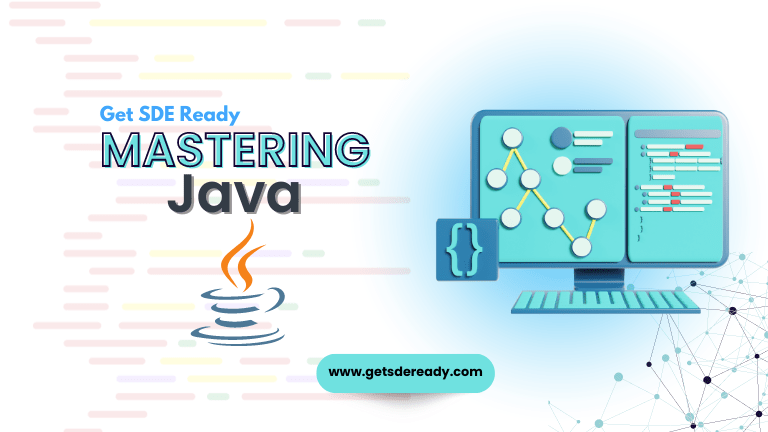Data Structures and Algorithms
- Introduction to Data Structures and Algorithms
- Time and Space Complexity Analysis
- Big-O, Big-Theta, and Big-Omega Notations
- Recursion and Backtracking
- Divide and Conquer Algorithm
- Dynamic Programming: Memoization vs. Tabulation
- Greedy Algorithms and Their Use Cases
- Understanding Arrays: Types and Operations
- Linear Search vs. Binary Search
- Sorting Algorithms: Bubble, Insertion, Selection, and Merge Sort
- QuickSort: Explanation and Implementation
- Heap Sort and Its Applications
- Counting Sort, Radix Sort, and Bucket Sort
- Hashing Techniques: Hash Tables and Collisions
- Open Addressing vs. Separate Chaining in Hashing
- DSA Questions for Beginners
- Advanced DSA Questions for Competitive Programming
- Top 10 DSA Questions to Crack Your Next Coding Test
- Top 50 DSA Questions Every Programmer Should Practice
- Top Atlassian DSA Interview Questions
- Top Amazon DSA Interview Questions
- Top Microsoft DSA Interview Questions
- Top Meta (Facebook) DSA Interview Questions
- Netflix DSA Interview Questions and Preparation Guide
- Top 20 DSA Interview Questions You Need to Know
- Top Uber DSA Interview Questions and Solutions
- Google DSA Interview Questions and How to Prepare
- Airbnb DSA Interview Questions and How to Solve Them
- Mobile App DSA Interview Questions and Solutions
DSA Interview Questions
- DSA Questions for Beginners
- Advanced DSA Questions for Competitive Programming
- Top 10 DSA Questions to Crack Your Next Coding Test
- Top 50 DSA Questions Every Programmer Should Practice
- Top Atlassian DSA Interview Questions
- Top Amazon DSA Interview Questions
- Top Microsoft DSA Interview Questions
- Top Meta (Facebook) DSA Interview Questions
- Netflix DSA Interview Questions and Preparation Guide
- Top 20 DSA Interview Questions You Need to Know
- Top Uber DSA Interview Questions and Solutions
- Google DSA Interview Questions and How to Prepare
- Airbnb DSA Interview Questions and How to Solve Them
- Mobile App DSA Interview Questions and Solutions
Introduction to High-Level System Design
System Design Fundamentals
- Functional vs. Non-Functional Requirements
- Scalability, Availability, and Reliability
- Latency and Throughput Considerations
- Load Balancing Strategies
Architectural Patterns
- Monolithic vs. Microservices Architecture
- Layered Architecture
- Event-Driven Architecture
- Serverless Architecture
- Model-View-Controller (MVC) Pattern
- CQRS (Command Query Responsibility Segregation)
Scaling Strategies
- Vertical Scaling vs. Horizontal Scaling
- Sharding and Partitioning
- Data Replication and Consistency Models
- Load Balancing Strategies
- CDN and Edge Computing
Database Design in HLD
- SQL vs. NoSQL Databases
- CAP Theorem and its Impact on System Design
- Database Indexing and Query Optimization
- Database Sharding and Partitioning
- Replication Strategies
API Design and Communication
Caching Strategies
- Types of Caching
- Cache Invalidation Strategies
- Redis vs. Memcached
- Cache-Aside, Write-Through, and Write-Behind Strategies
Message Queues and Event-Driven Systems
- Kafka vs. RabbitMQ vs. SQS
- Pub-Sub vs. Point-to-Point Messaging
- Handling Asynchronous Workloads
- Eventual Consistency in Distributed Systems
Security in System Design
Observability and Monitoring
- Logging Strategies (ELK Stack, Prometheus, Grafana)
- API Security Best Practices
- Secure Data Storage and Access Control
- DDoS Protection and Rate Limiting
Real-World System Design Case Studies
- Distributed locking (Locking and its Types)
- Memory leaks and Out of memory issues
- HLD of YouTube
- HLD of WhatsApp
System Design Interview Questions
- Adobe System Design Interview Questions
- Top Atlassian System Design Interview Questions
- Top Amazon System Design Interview Questions
- Top Microsoft System Design Interview Questions
- Top Meta (Facebook) System Design Interview Questions
- Top Netflix System Design Interview Questions
- Top Uber System Design Interview Questions
- Top Google System Design Interview Questions
- Top Apple System Design Interview Questions
- Top Airbnb System Design Interview Questions
- Top 10 System Design Interview Questions
- Mobile App System Design Interview Questions
- Top 20 Stripe System Design Interview Questions
- Top Shopify System Design Interview Questions
- Top 20 System Design Interview Questions
- Top Advanced System Design Questions
- Most-Frequented System Design Questions in Big Tech Interviews
- What Interviewers Look for in System Design Questions
- Critical System Design Questions to Crack Any Tech Interview
- Top 20 API Design Questions for System Design Interviews
- Top 10 Steps to Create a System Design Portfolio for Developers
Understanding Cache-Aside, Write-Through, and Write-Behind Strategies for Optimal Performance
This comprehensive guide covers advanced caching strategies for database optimization, memory caching, and scalable application performance. Learn how Cache-Aside, Write-Through, and Write-Behind techniques enhance system efficiency, reduce latency, and maintain data consistency across high-demand environments.
Introduction to Caching Strategies
What Is Caching and Why Is It Important?
Caching is a data storage technique used to create temporary data copies for faster retrieval, reduced latency, and improved database performance. This method, often referred to as memory caching, accelerates website responsiveness and application scalability, making it critical for high-traffic platforms.
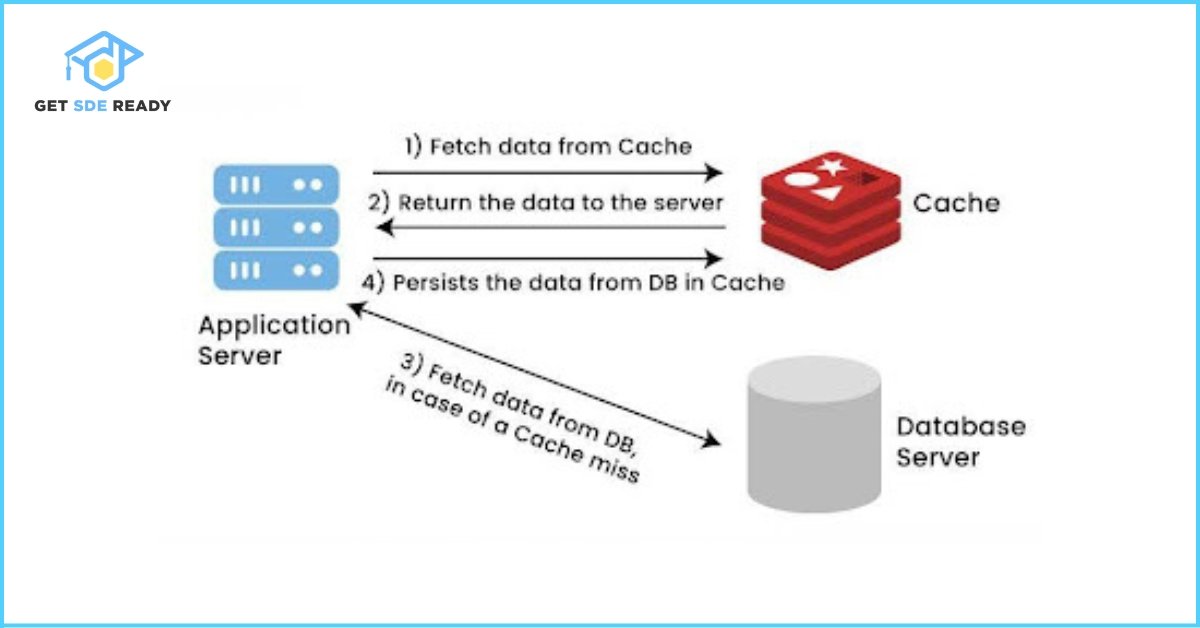
Why Are Caching Strategies Critical for Scalable Systems?
Choosing the right caching strategy—whether for read-heavy applications or write-intensive systems—ensures efficient data retrieval, minimizes stale data risks, and maintains consistency between cache and database layers. This is essential for building robust, scalable systems while aligning with Experience, Expertise, Authoritativeness, and Trustworthiness (EEAT) guidelines.
Cache-Aside (Lazy Loading): Optimizing Read-Heavy Applications
How Does the Cache-Aside Technique Work?
- Step 1: The application first checks the cache for the requested data.
- Step 2: If the data is not found (cache miss), it is fetched directly from the database.
- Step 3: The retrieved data is then cached for subsequent requests, optimizing future read operations.
By leveraging Cache-Aside strategies for read-heavy applications, web developers can significantly improve page load times and overall site performance.
Real-World Example: E-Commerce Product Catalogs
For instance, major e-commerce platforms like Amazon use Cache-Aside to efficiently load product details. This approach reduces database load and enhances user experience by delivering faster responses. Enhance your understanding of scalable systems with our web development course, where advanced caching and performance optimization techniques are covered.
Write-Through: Ensuring Real-Time Data Consistency
How Does the Write-Through Method Work?
- Step 1: Data is immediately written to the cache.
- Step 2: The cache then updates the database in parallel.
- Step 3: This ensures immediate consistency between the cache and database layers.
The Write-Through strategy is particularly effective for real-time data caching needs where data accuracy is paramount.
Real-World Example: Banking Transaction Systems
Financial institutions rely on Write-Through caching to maintain accurate and up-to-date transaction records. Every financial operation, such as deposits or withdrawals, is instantly mirrored in both the cache and the database, ensuring flawless consistency. Master system design principles for mission-critical applications with our DSA and System Design course.
Write-Behind (Write-Back): Prioritizing High Write Performance
What Is the Write-Behind Approach and How Does It Work?
- Step 1: Data is initially written to the cache.
- Step 2: Database updates are then delayed, batched, and executed subsequently.
- Step 3: This method significantly boosts write performance, though it carries a slight risk of data loss during unexpected cache failures.
The Write-Behind technique is ideal for systems that prioritize high-frequency write operations while managing heavy data workloads.
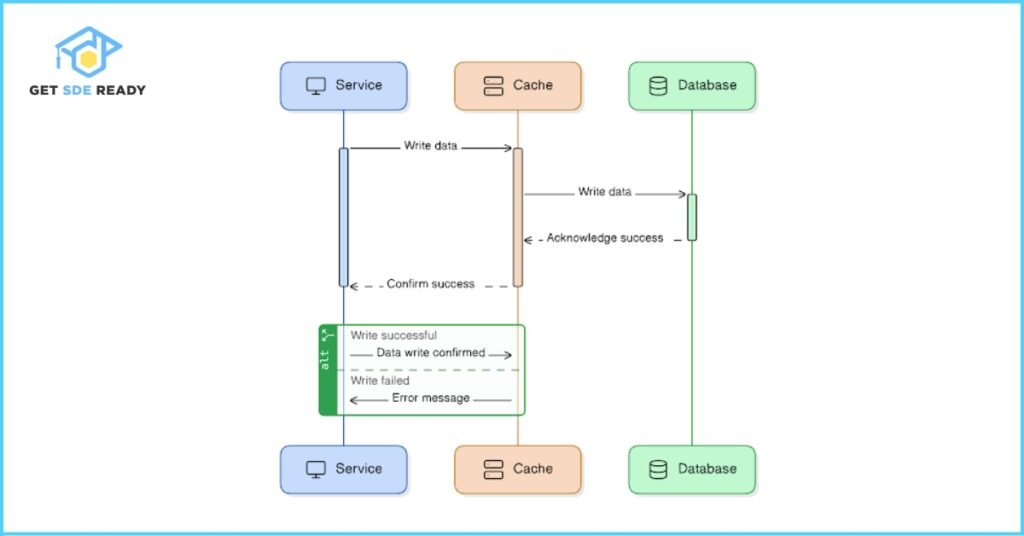
Real-World Example: Social Media Platforms
Social networks such as Facebook implement Write-Behind caching to handle frequent updates like user posts and comments. This strategy efficiently manages high-volume write operations, ensuring fast response times without compromising overall performance. Explore top Meta Facebook DSA interview questions to deepen your understanding of caching techniques in large-scale social media systems.
Cache-Aside vs. Write-Through vs. Write-Behind: Key Comparisons
Pros and Cons of Each Caching Strategy
Strategy | Pros | Cons |
Cache-Aside | Reduces database load, simple implementation, improves read performance | Risk of stale data, potential for cache misses |
Write-Through | Ensures guaranteed data consistency, real-time updates | Potential slower write speeds, increased write latency |
Write-Behind | Offers high write throughput, effective for batch processing | Possibility of data loss during cache failure |
When Should You Use Each Caching Technique?
- Cache-Aside: Best for read-heavy applications such as blogs, product catalogs, and news sites.
- Write-Through: Essential for systems requiring real-time data consistency, including banking, healthcare, and financial transaction platforms.
- Write-Behind: Ideal for write-intensive applications like social media platforms, real-time analytics, and content management systems.
Leverage our Top 20 DSA Interview Questions guide to prepare for technical interviews focusing on caching strategies and system performance optimization.
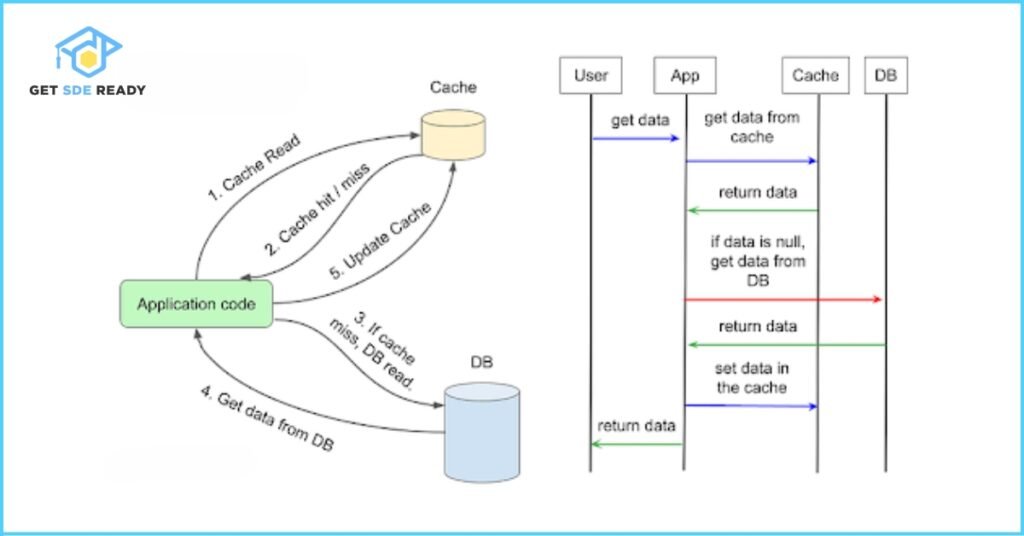
Conclusion: Choosing the Right Caching Strategy
Why Do Caching Strategies Matter in Modern Web Development?
Effective caching is critical to enhance application scalability, reduce latency, and deliver seamless user experiences in high-demand environments. From memory caching to real-time data updates, selecting the proper caching strategy directly impacts overall system performance.
Final Recommendations for Optimal Performance
Evaluate your application’s read/write ratio and consistency requirements before choosing a caching strategy. For instance, e-commerce platforms often combine Cache-Aside with Write-Behind methods to achieve a balanced performance profile. Deepen your expertise further with our Data Science Crash Course, which covers advanced caching implementations and performance tuning.
What is the significance of time complexity in algorithm design?
Time complexity plays a critical role in determining the speed and performance of an algorithm. It helps developers understand the relationship between the input size and the number of operations the algorithm performs. Analyzing time complexity ensures that even as input sizes grow, the algorithm remains efficient and scalable. For further insight into algorithm optimization techniques, consider exploring an introductory DSA course.
How does space complexity affect modern software development?
Space complexity evaluates the memory usage of algorithms and is crucial in environments with limited hardware resources. Efficient management of memory not only prevents wastage of system resources but also contributes to improved execution speeds and overall system reliability. By carefully analyzing the space requirements of your applications, you can design software that performs reliably under pressure. If you’re interested in learning more about balancing memory and performance, a comprehensive Web Development course might be the perfect opportunity.
Can complexity analysis improve the efficiency of real-world applications?
Absolutely, complexity analysis is a powerful tool for diagnosing and enhancing the performance of real-world applications. By assessing both time and space metrics, developers can pinpoint inefficiencies and implement targeted optimizations. These improvements often translate into faster loading times, reduced resource consumption, and better user experiences. For a more detailed exploration, consider enrolling in a combined Design DSA Combined course that covers both theoretical and practical aspects of complexity analysis.

DSA, High & Low Level System Designs
- 85+ Live Classes & Recordings
- 24*7 Live Doubt Support
- 400+ DSA Practice Questions
- Comprehensive Notes
- HackerRank Tests & Quizzes
- Topic-wise Quizzes
- Case Studies
- Access to Global Peer Community
Buy for 52% OFF
₹25,000.00 ₹11,999.00
Accelerate your Path to a Product based Career
Boost your career or get hired at top product-based companies by joining our expertly crafted courses. Gain practical skills and real-world knowledge to help you succeed.

DSA, High & Low Level System Designs
- 85+ Live Classes & Recordings
- 24*7 Live Doubt Support
- 400+ DSA Practice Questions
- Comprehensive Notes
- HackerRank Tests & Quizzes
- Topic-wise Quizzes
- Case Studies
- Access to Global Peer Community
Buy for 52% OFF
₹25,000.00 ₹11,999.00

Fast-Track to Full Spectrum Software Engineering
- 120+ Live Classes & Recordings
- 24*7 Live Doubt Support
- 400+ DSA Practice Questions
- Comprehensive Notes
- HackerRank Tests & Quizzes
- 12+ live Projects & Deployments
- Case Studies
- Access to Global Peer Community
Buy for 51% OFF
₹35,000.00 ₹16,999.00
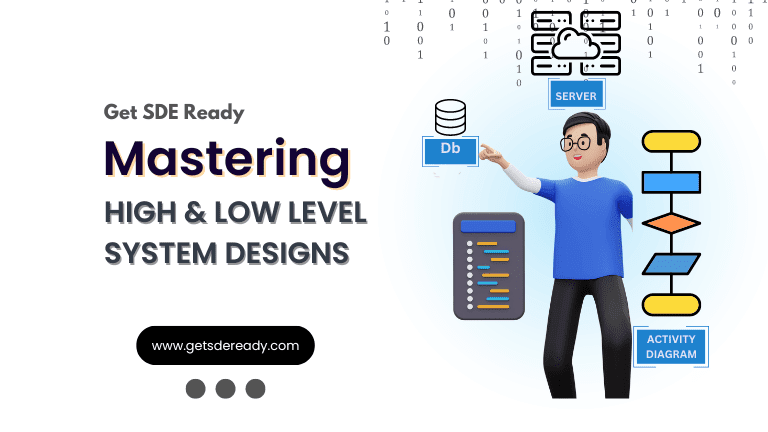
Low & High Level System Design
- 20+ Live Classes & Recordings
- 24*7 Live Doubt Support
- Case Studies
- Comprehensive Notes
- HackerRank Tests
- Topic-wise Quizzes
- Access to Global Peer Community
- Interview Prep Material
Buy for 60% OFF
₹20,000.00 ₹7,999.00
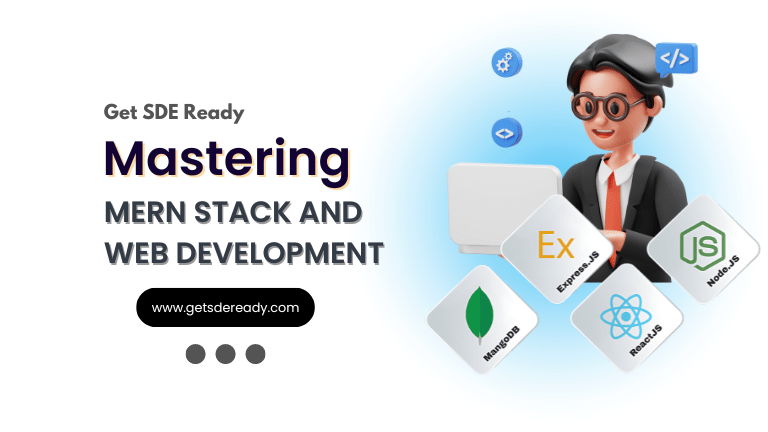
Mastering Mern Stack (WEB DEVELOPMENT)
- 65+ Live Classes & Recordings
- 24*7 Live Doubt Support
- 12+ Hands-on Live Projects & Deployments
- Comprehensive Notes & Quizzes
- Real-world Tools & Technologies
- Access to Global Peer Community
- Interview Prep Material
- Placement Assistance
Buy for 53% OFF
₹15,000.00 ₹6,999.00
Reach Out Now
If you have any queries, please fill out this form. We will surely reach out to you.
Contact Email
Reach us at the following email address.
arun@getsdeready.com
Phone Number
You can reach us by phone as well.
+91-97737 28034
Our Location
Rohini, Sector-3, Delhi-110085


